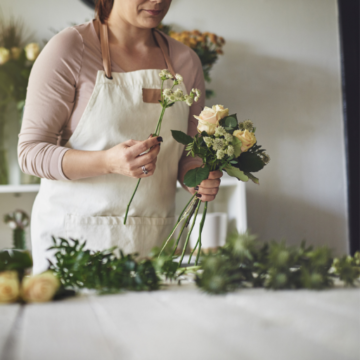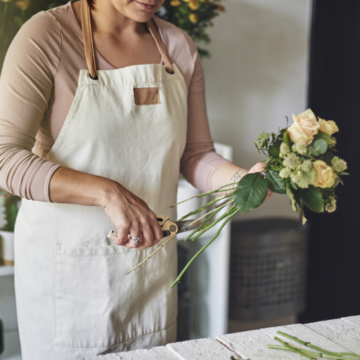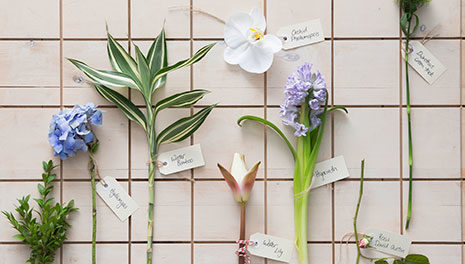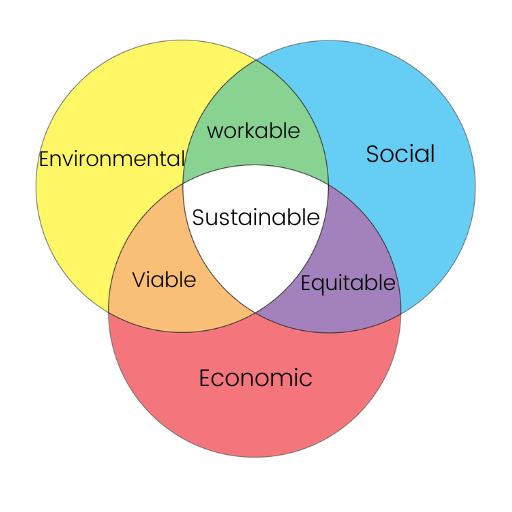Fresh flowers are the star of the show when it comes to decor at the majority of weddings. For years, brides have carried bouquets, vases have been placed on tables as centerpieces and buttonhole flowers have been pinned to suits or hats. As well as visual impact, flowers add a lovely scent to the air and a touch of delicate freshness and style.
However, more recently, we’ve collectively become more aware of the impact that blooms can have on the environment. Strange as it sounds – given that they’re a natural product – the flowers you choose for your big day do make a difference to the overall carbon footprint of your celebrations, no matter if you compost them or not.
In this post, we share three ways to reduce the environmental impact of your wedding flowers while also maintaining that freshly-cut magic.
Source your blooms locally
The distance that your flowers travel has a significant impact on the overall carbon footprint attached to them. If you’re ordering in exotic blooms that have been flown over on a plane, or varieties that grow best in specific places, then you’re already adding the transport miles to your environmental impact. Plus, these blooms will also need to sit in chillers or be wrapped in plastic packaging in order to transport them successfully.
Instead, opt for flowers that are grown as near to your venue as possible. That way, they can be picked close to the day, without needing to be chilled and wrapped, saving on energy and reducing the need for plastic. They’ll also only travel the minimum number of miles. The best way to be confident on where your flowers are coming from is to purchase them from a local florist, who knows their supply chain. Or, if you’re green-fingered, grow them yourself!

Choose varieties that are in season
We’re so used to being able to get the flowers we want, when we want them, that many of us have forgotten the importance of seasonality. It is possible to grow many varieties outside of their home soil, or in a different time of year, but growers will rely on artificial heat and light to do so, which uses excess energy.
To avoid this, embrace the season you’ve chosen for your wedding day and pick your flowers to match. They’ll look their best at the right time of year anyway, so it’s just better all-round. This guide from The Fresh Flower Project can help give you some inspiration.
Less is more
Maximalism in flowers can look incredibly striking – but so can minimalism. If you’re looking to be more sustainable throughout your wedding planning, then opting for single stems, or a few flowers arranged artfully can both reduce your environmental impact and look incredibly stylish.
There’s also the additional benefit that fewer floral arrangements mean less waste, as you’re more likely to be able to repurpose your wedding flowers. You could give them to your bridal party to decorate their homes with for a few extra days after the wedding, have some dried to keep, or even donate them to a local nursing home for their enjoyment.
Think about the longer impact
Everyone wants their wedding day to be perfect – and there’s no reason that yours can’t be. But by considering the longer-lasting environmental impacts of your wedding flowers, you can ensure you’re starting off married life in the kindest way possible for the planet.



